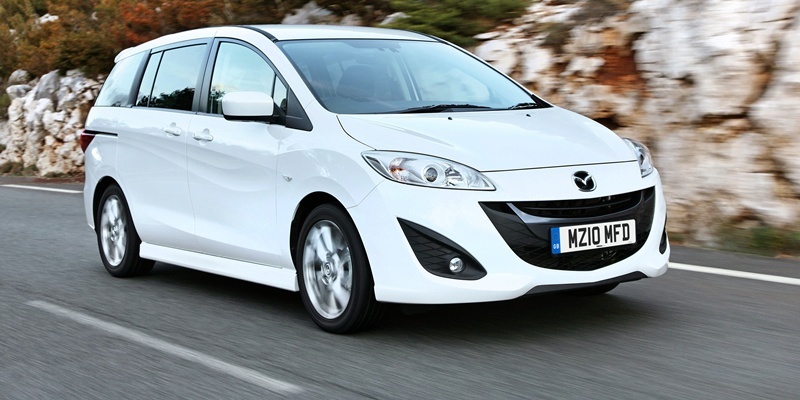Mazda’s 5 has always been one of the better-looking people carriers. Its basic van-like shape is disguised with a sharp, wedge shape, lots of stylish little design touches and smart alloy wheels.
Even as a single man with no kids and not even a Labrador to throw in the back, I didn’t feel too out of place driving it.
Should you have the aforementioned, the Mazda is among the most practical of mid-size MPVs. Its cleverest innovation is the rear sliding doors which give a much bigger opening than many of its competitors, making access a lot easier.
In the Sport version I drove, they operate electronically, opening or closing fully with a single tug on the door handle. Cleverly, you can also operate them via a button on the key fob, meaning the doors can be open as you arrive at the car perfect if your hands are full or it’s raining and you want to bundle everyone in there in a hurry.
Officially, the 5 is a seven-seater but in reality you’d be advised to leave the rearmost seats folded into the floor as they’re not useful for any more than child-sized people and they diminish the otherwise quite cavernous boot space to a drastic degree.
The rear seats slide forward and back so you can tailor boot space versus rear leg space to a degree. With all the seats folded there’s 1485 litres of load space back there.
The 5 range starts at a little over £18,000 for the 1.8 litre petrol and stretches to around £22,000 for the 1.6 diesel unit in Sport trim. I drove the 2.0 litre petrol version, also in Sport trim.
It’s pretty well equipped. As well as the aforementioned clever doors, there’s 17-inch alloy wheels, leather upholstery, heated front seats, front foglights, a tyre pressure monitoring system and various exterior styling tweaks. It also carries over the standard equipment from the TS2 version, namely privacy glass, rear parking sensors, climate control air-conditioning, automatic wipers, a trip computer and Bluetooth connectivity.
For a people carrier, the 5 is a pretty fine drive. The suspension is particularly smooth and the handling is reasonable, if not quite as nimble as the car’s ‘Sport’ badge would have you believe.
The 147bhp petrol engine whips it up to 62mph in 11 seconds, which is reasonably pacey for this type of vehicle.
It doesn’t feel that fast at low revs or when fully laden though, and I’d consider spending the extra £1300 on the 1.6 diesel which as well as having an extra 58lb ft of pulling power (199 compared to 141) also gives around 13.5 extra mpg.
Overall, the Mazda 5 is a very fine choice. It’s not as dynamic as the C-Max or S-Max produced by Ford, who seem to be the only manufacturer to have worked out how to make people carriers fun to drive, but it’s comfortable, practical, good looking and decent value for money.
Price: £20,650.0-62mph: 11sec.Top speed: 120mph.Economy: 40.9mpg.CO2 emissions: 159g/km.
